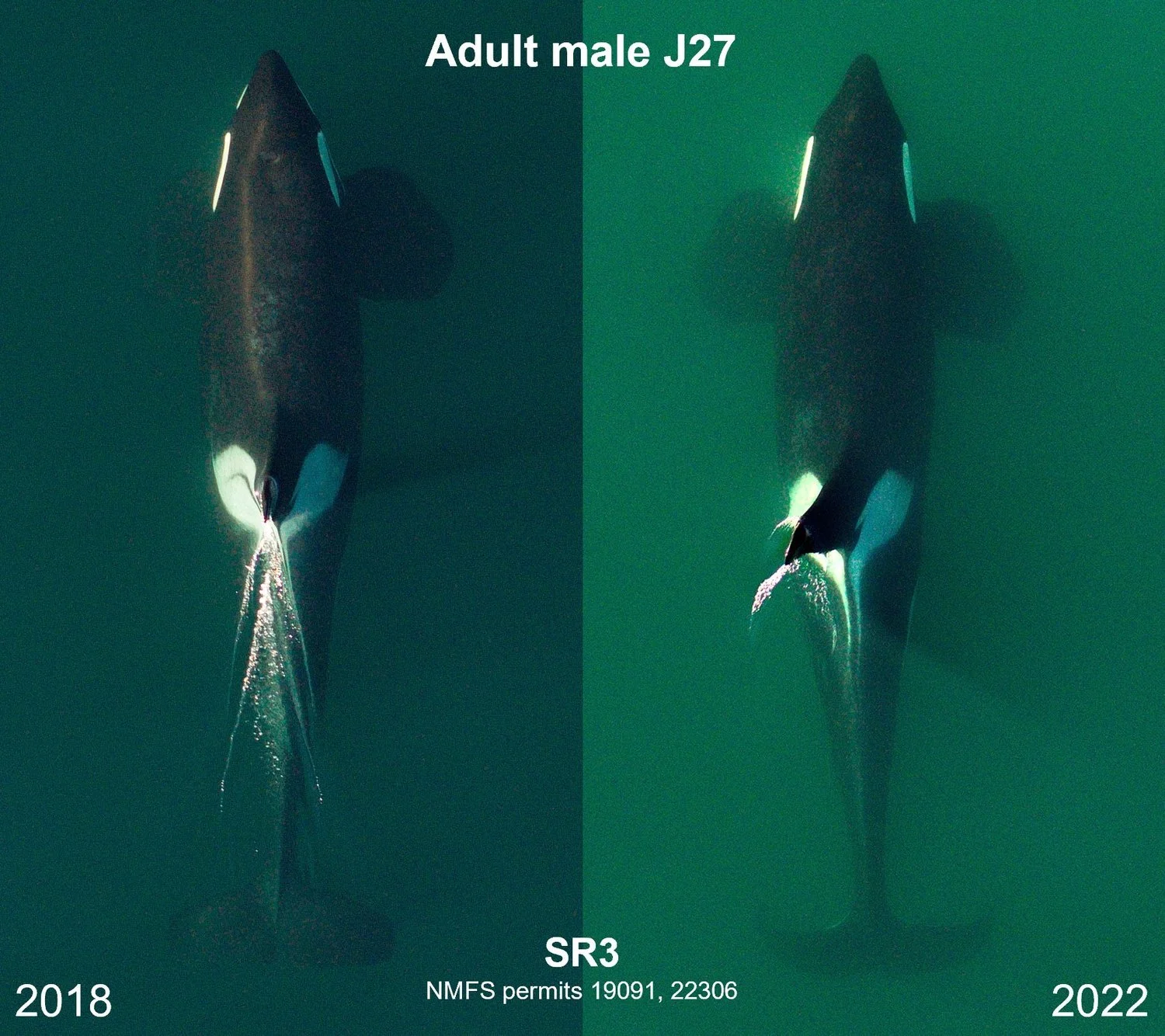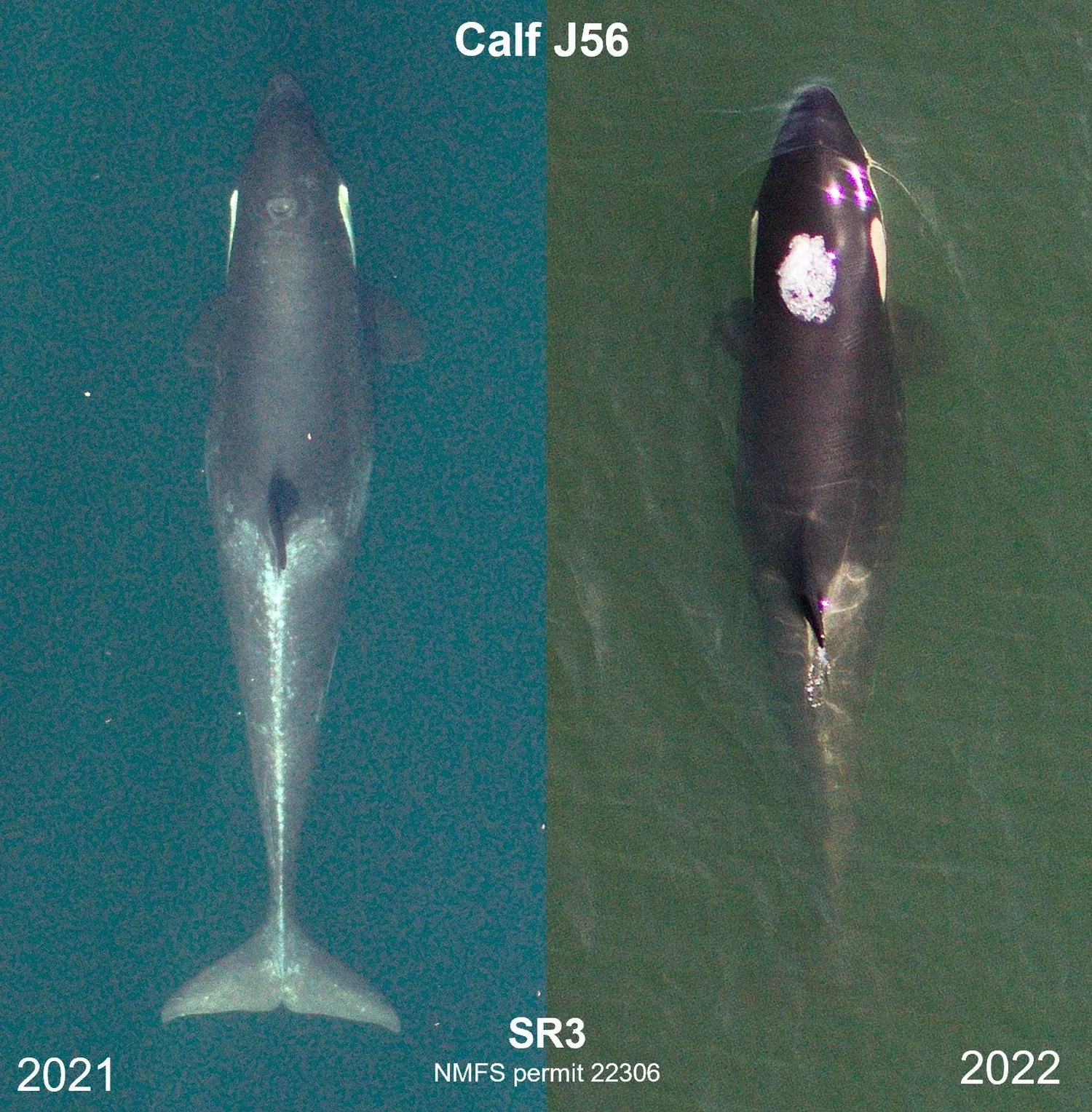Southern Resident Killer Whales Need Precautionary Conservation Measures
Southern Resident killer whales need precautionary conservation measures, but it is important that these measures are based on objective, quantitative and adaptive science. SR3’S photogrammetry research is powerful for supporting these measures and hopefully monitoring their success.
An emergency order was issued this week by the Washington Department of Fish and Wildlife (WDFW), declaring 13 individual Southern Resident killer whales (SRKWs) as vulnerable based on measurements from SR3’s non-invasive drone photographs. Twelve of these whales were identified to be in poor body condition and one whale was measured to likely be in late-stage pregnancy. Whales in poor body condition have been found to have an increased probability of mortality in the coming months.
Remember to be Whale Wise when on the water: Washington law requires vessels to stay at least 300 yards from SRKWs on either side and at least 400 yards out of the path in front of and behind the whales. Vessels must also reduce their speed to seven knots within one-half nautical mile of SRKWs.
Not a picture of health: Aerial Images of two of the currently vulnerable whales (J27 and J56).
Aerial images of an adult male Southern Resident killer whale (J27) when he was in above average body condition (which has been typical for him) in 2018, prior to declining to poor body condition in 2022. Note how his body profile and the angle of his white eye patches change as the result of fat loss. Images were collected non-invasively using a drone flown at >100 ft under NMFS Permit #s 19091 and 22306.
Aerial images of a young Southern Resident killer whale (J56) when she was in poor body condition in 2021 (and was previously designated as vulnerable by WDFW) and again in 2022, when her condition had declined even further. Note how her white eye patches trace the shape of her skull in 2022 when she is extremely emaciated. Images were collected non-invasively using a drone flown at >100 ft under NMFS Permit # 22306.


